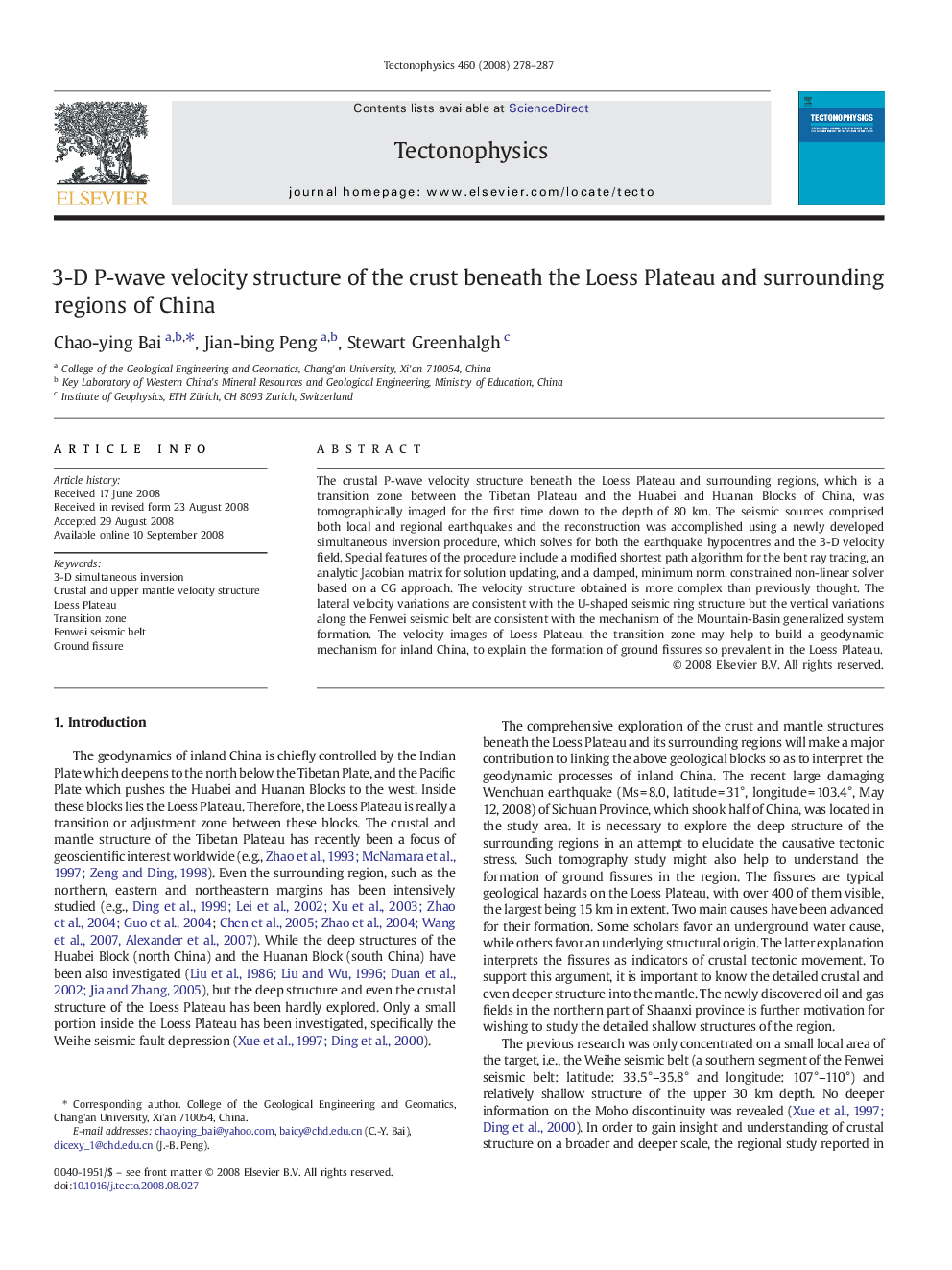| Article ID | Journal | Published Year | Pages | File Type |
|---|---|---|---|---|
| 4694295 | Tectonophysics | 2008 | 10 Pages |
The crustal P-wave velocity structure beneath the Loess Plateau and surrounding regions, which is a transition zone between the Tibetan Plateau and the Huabei and Huanan Blocks of China, was tomographically imaged for the first time down to the depth of 80 km. The seismic sources comprised both local and regional earthquakes and the reconstruction was accomplished using a newly developed simultaneous inversion procedure, which solves for both the earthquake hypocentres and the 3-D velocity field. Special features of the procedure include a modified shortest path algorithm for the bent ray tracing, an analytic Jacobian matrix for solution updating, and a damped, minimum norm, constrained non-linear solver based on a CG approach. The velocity structure obtained is more complex than previously thought. The lateral velocity variations are consistent with the U-shaped seismic ring structure but the vertical variations along the Fenwei seismic belt are consistent with the mechanism of the Mountain-Basin generalized system formation. The velocity images of Loess Plateau, the transition zone may help to build a geodynamic mechanism for inland China, to explain the formation of ground fissures so prevalent in the Loess Plateau.
